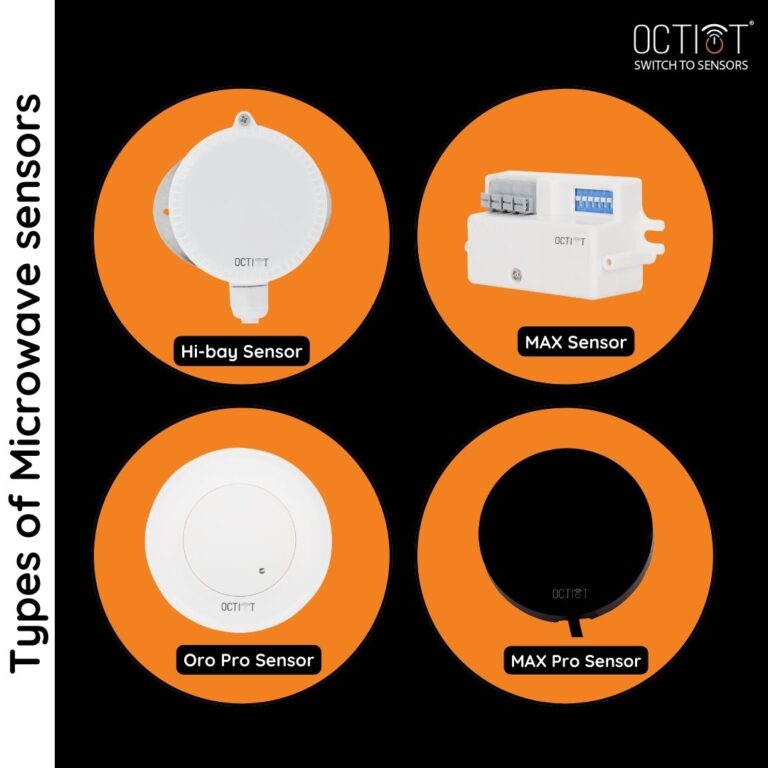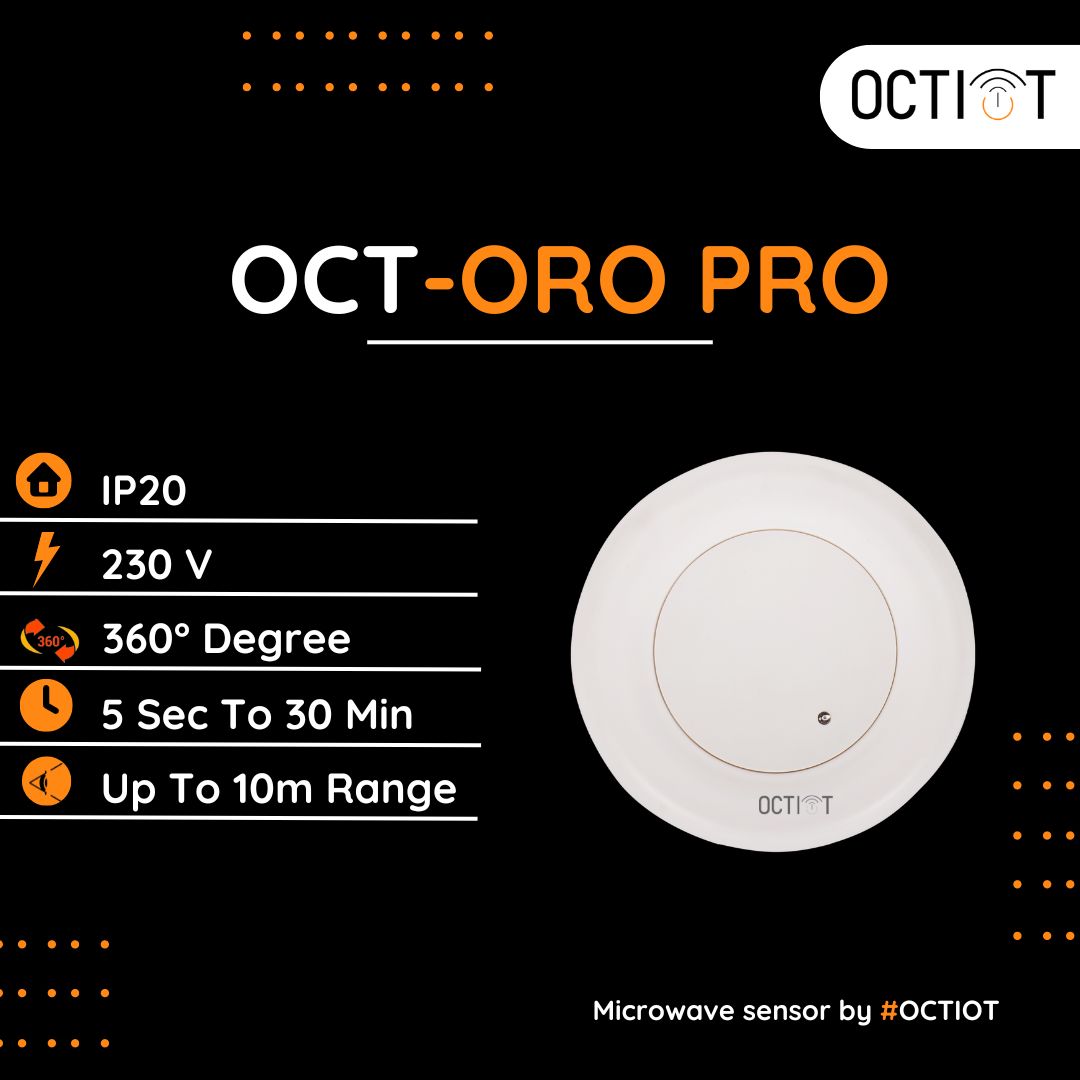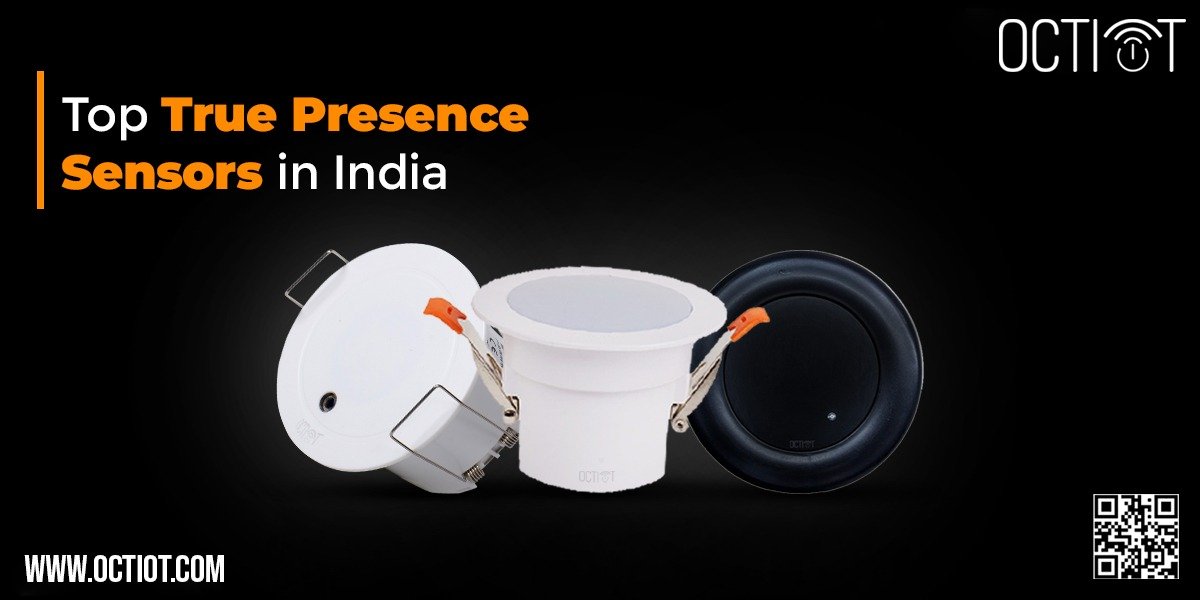Introduction

Are you curious about how microwave sensors work? Look no further because in this article, we will explore the working principle of microwave sensors, particularly focusing on the technology developed by OCTIOT. With a deep understanding of the role of microwave sensors in various industries, OCTIOT has revolutionized the field with their advanced and reliable technology.
Understanding the working principle of microwave sensors
Microwave sensors utilize the principle of sending out microwave signals and analyzing the reflected signals to detect objects and measure their distance. These sensors operate based on the Doppler effect, which is the change in frequency or wavelength of a wave as perceived by an observer moving relative to the source of the waves.
When a microwave signal is emitted by the sensor, it travels through the air until it encounters an object. The signal interacts with the object and reflects back towards the sensor. By measuring the time it takes for the signal to return, the sensor can calculate the distance between itself and the object.
Additionally, by analyzing the frequency shift of the reflected signal, the sensor can determine the speed and direction of the moving object.
Microwave sensors are active sensors, meaning they emit their own signals and do not rely on external light sources. This makes them highly effective in various environments, including low light conditions or adverse weather such as rain, fog, or snow. Unlike passive sensors, which rely on detecting changes in ambient radiation, microwave sensors can provide accurate and reliable results regardless of lighting conditions.
Types of microwave sensors

There are several types of microwave sensors available, each with its own unique characteristics and applications. The most common types include:
Continuous wave (CW) radar sensors: These sensors emit a continuous microwave signal and measure the frequency shift of the reflected signal. They are commonly used in traffic monitoring systems to detect the speed and movement of vehicles.
Frequency-modulated continuous wave (FMCW) radar sensors: FMCW sensors emit a continuously changing frequency signal and measure the frequency difference between the emitted and reflected signals. This allows for more precise distance and speed measurements and is often used in industrial automation and distance measurement applications.
Pulse radar sensors: Pulse radar sensors emit short bursts of microwave energy and measure the time it takes for the signal to return. These sensors are commonly used in security systems to detect the presence of intruders or in automotive applications for collision avoidance.
Doppler radar sensors: Doppler radar sensors focus on detecting the frequency shift of the reflected signal caused by the movement of objects. They are often used in speed enforcement systems, weather monitoring, and sports applications.
Advantages of microwave sensors over other sensing technologies
Microwave sensors offer several advantages over other sensing technologies, making them ideal for a wide range of applications. Here are some key advantages:
Non-contact sensing: Microwave sensors do not require physical contact with the object being detected. This makes them suitable for applications where contact could cause damage or interfere with the object’s operation.
High accuracy and reliability: With their advanced signal processing techniques and algorithms, microwave sensors provide accurate and reliable measurements. They are not affected by variations in ambient light or temperature, ensuring consistent performance in various conditions.
Wide detection range: Microwave sensors can detect objects over a wide range, from a few centimeters to several meters. This makes them suitable for applications where the distance to be measured or the size of the objects may vary.
Fast response time: Microwave sensors provide real-time data, allowing for quick decision-making and response. This is particularly important in applications where safety or efficiency is a priority.
Versatility: Microwave sensors can be used in a variety of industries and applications, including security systems, traffic monitoring, industrial automation, robotics, agriculture, and more. Their versatility makes them a valuable tool for enhancing safety, efficiency, and productivity.
Applications of microwave sensors
Microwave sensors find applications in various industries, contributing to improved safety, efficiency, and productivity. Some key applications include:
Security systems: Microwave sensors are commonly used in security systems to detect the presence of intruders. They can be integrated into alarm systems, motion detectors, and access control systems to enhance security measures.
Traffic monitoring: Microwave sensors play a crucial role in traffic monitoring systems, enabling the detection and measurement of vehicle speed, traffic flow, and occupancy. This information is used to optimize traffic management, improve road safety, and reduce congestion.
Industrial automation: Microwave sensors are widely used in industrial automation to detect the presence, position, and movement of objects. They are used in conveyor systems, material handling, and robotics to improve efficiency and ensure accurate control.
Agriculture: Microwave sensors are utilized in agriculture for various applications, including soil moisture measurement, crop monitoring, and irrigation control. They provide valuable data for optimizing agricultural practices and enhancing crop yield.
Weather monitoring: Microwave sensors are used in weather monitoring systems to measure rainfall, snowfall, and humidity. They help in predicting and analyzing weather patterns, enabling effective disaster management and agricultural planning
Factors to consider when using microwave sensors
When using microwave sensors, there are several factors to consider to ensure optimal performance and accuracy. These include:
Operating frequency: The operating frequency of the microwave sensor should be chosen based on the specific application requirements. Higher frequencies provide better resolution but have shorter detection ranges.
Antenna design: The design of the sensor’s antenna plays a crucial role in determining the detection range and directionality. Different antenna designs are suitable for different applications, so it is important to choose the right one.
Environmental conditions: Microwave sensors can be affected by environmental conditions such as temperature, humidity, and electromagnetic interference. It is essential to consider these factors and choose sensors that are suitable for the intended environment.
Power requirements: Microwave sensors require power to operate. The power requirements should be considered to ensure proper functioning and to determine the power source and power supply options.
Installation and calibration: Proper installation and calibration are crucial for the accurate operation of microwave sensors. It is important to follow the manufacturer’s guidelines and recommendations to achieve optimal performance.
Common challenges and troubleshooting tips for microwave sensors
While microwave sensors offer many advantages, they can also face certain challenges in specific environments or applications. Here are some common challenges and troubleshooting tips:
Interference: Microwave sensors can be affected by electromagnetic interference from other devices or sources. To minimize interference, it is recommended to choose sensors with advanced filtering capabilities and to avoid placing them near sources of interference.
False alarms: Microwave sensors can sometimes generate false alarms due to environmental factors such as wind, rain, or small animals. Adjusting the sensitivity settings and installing additional filters can help reduce false alarms.
Obstruction detection: In certain applications, microwave sensors need to detect objects even when they are partially obstructed. This can be challenging, but adjusting the sensor’s parameters and utilizing advanced algorithms can improve detection accuracy.
Signal attenuation: Microwave signals can experience attenuation when passing through certain materials or in challenging environments. Understanding the attenuation characteristics and choosing appropriate sensors can help overcome this challenge
Power supply issues: Microwave sensors require a stable power supply for proper operation. Troubleshooting power supply issues, such as voltage fluctuations or inadequate power sources, can help ensure reliable sensor performance
OCTIOT – an innovative microwave sensor technology
OCTIOT is a leading provider of innovative microwave sensor technology. With their expertise in signal processing, algorithm development, and advanced sensor design, OCTIOT has revolutionized the field of microwave sensors. Their sensors are known for their accuracy, reliability, and versatility, making them ideal for a wide range of applications.
OCTIOT’s sensors incorporate advanced algorithms and signal processing techniques to enhance performance in challenging environments. They can effectively detect moving objects, even in low light conditions or adverse weather. The real-time and precise data provided by OCTIOT’s sensors enable improved safety, efficiency, and productivity in various industries
How does OCTIOT enhance the performance of microwave sensors?
OCTIOT’s technology brings several enhancements to the performance of microwave sensors. Here are some key areas where OCTIOT excels:
Accuracy: OCTIOT’s sensors utilize advanced algorithms and signal processing techniques to achieve high accuracy in object detection, distance measurement, and speed calculation. This ensures reliable and precise data for decision-making and control systems.
Reliability: OCTIOT’s sensors are designed to withstand challenging environments and provide consistent performance. They are resistant to interference, temperature variations, and other environmental factors that can affect sensor operation.
Versatility: OCTIOT’s sensors are versatile and can be customized to meet specific application requirements. They offer a wide range of detection distances, frequency options, and antenna designs, allowing for optimal performance in various industries.
Integration capabilities: OCTIOT’s sensors are designed for seamless integration into existing systems and infrastructures. They can be easily integrated with other sensors, control systems, and networks, enabling efficient data collection and analysis.
Continuous innovation: OCTIOT is committed to continuous innovation and improvement. They invest in research and development to stay at the forefront of microwave sensor technology, ensuring their solutions are always up-to-date and aligned with industry needs.
Conclusion
Microwave sensors play a crucial role in various industries, providing accurate and reliable data for object detection, distance measurement, and speed calculation. With their ability to operate in challenging environments and deliver real-time results, microwave sensors enhance safety, efficiency, and productivity across a wide range of applications.
OCTIOT, with its innovative technology and advanced sensor design, has revolutionized the field of microwave sensors. Their sensors offer enhanced accuracy, reliability, and versatility, making them a preferred choice for industries such as security systems, traffic monitoring, industrial automation, and more.
As technology continues to advance, microwave sensors are expected to play an even more significant role in shaping the future. With OCTIOT’s continuous innovation and commitment to excellence, the future of microwave sensor technology looks promising, opening up new possibilities for improved safety, efficiency, and productivity in various industries.
Contact us: 088600 12342
For more information: sales@octiot.com





1 Comment
Hello there I am so delighted I found your weblog, I really found you by accident, while I was browsing
on Aol for something else, Anyhow I am hefe now and
would just like to say cheers for a remarkable post and a all round entertaining blog (I also
love the theme/design), I don’t have time to lookk over it all at the minute but I have bookmarked
it and also added in your RSS feeds, so when I have time I will be back to
read much more, Please do kwep up the great work. https://odessaforum.biz.ua/